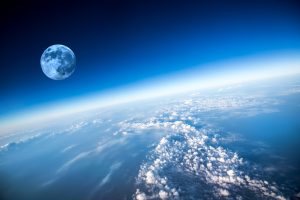 Up until now, we’ve depended on the resources of the earth to provide us with everything we need. Well, maybe it’s time for a change. Even though we traveled to the moon over 40 years ago, we still haven’t really explored the resources that are available there.
Up until now, we’ve depended on the resources of the earth to provide us with everything we need. Well, maybe it’s time for a change. Even though we traveled to the moon over 40 years ago, we still haven’t really explored the resources that are available there.
Earth’s resources have been thoroughly explored since civilization started, which has forced us to dig deeper, often at higher risk and more expense. What if everything that we need is up there, visible in the night sky? Recent developments have seen a nudge that way, leading us to wonder what treasures are available if we can just figure out how to get there and back at an efficient rate.
Movements to Mine the Moon
Recent years have seen a renewed effort to get to the moon in order to gain access to its natural resources. China’s missions to the moon over the past few years sought to obtain geological samples and learn what kinds of resources are available there. In America, on the other hand, it seems that space exploration has moved into the private sector, with SpaceX’s anticipated mission to mars, and Google’s issued challenge to the private sector, offering $30 million in prizes to the first team to successfully land a robot on the moon, and then travel more than 500 meters and transmit high-definition images back to earth.
What Does the Moon Have that Earth Doesn’t?
So what is it that would draw us to the moon? What does it have to offer that earth doesn’t? It’s possible that the most valuable resource on the moon is Helium-3, a lightweight isotope related to the helium that we’re used to seeing here on earth. H-3 can be used to fuel nuclear fusion, the process that powers the sun. We’ve harnessed nuclear power on earth, but unfortunately, our methods produce dangerous radioactive byproducts. H-3 could be clean, safe energy for the entire planet. It could lighten our dependence on fossil fuels and make whoever finds an efficient way to harvest and transport the king of clean-burning fuel.
What Else Is There?
The other thing that we have our eye on is Rare Earth Elements, or REE’s (also referred to as Rare Earth Metals). This includes yttrium and the 15 lanthanide elements, often seen as a strip of elements under the main periodic table of elements.
REE’s have seen an explosive demand in the past decade or two, since they’re vital to the construction of modern electronics, from DVD players to cell phone batteries. They’re used for medical tools and resources, for tools used in military efforts, and in entertainment resources like televisions. China is currently the world leader in producing these resources, although it’s estimated that at this rate, they’ll run out of REE’s within the next 15-20 years. In fact, recent years have already seen China halting or slowing exports of this resource to other countries. It’s no surprise, then, that China seems to be the one leading the charge to mine the moon.
Other elements of interest up on the moon are platinum-grouped metals, and water. While water might not seem exciting to those of us on earth, it’s a vital resource for the perpetuation of civilization on other environments, from the moon to various space stations or asteroids near us in the solar system.
What Will This Mean for Mining?
It’s possible that, in the near future, mining on the moon and on other surfaces, like asteroids, will be a major field. In addition, this could mean big news for space travel in general. After all, the pursuit of valuable natural resources has always been the catalyst for significant leaps and bounds in exploration and human settlement.


Leave a Comment